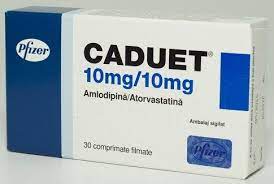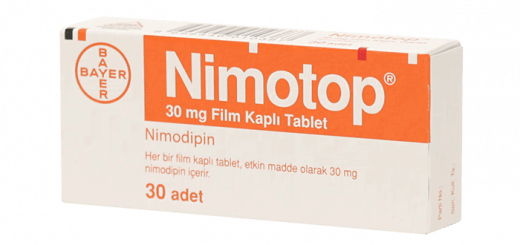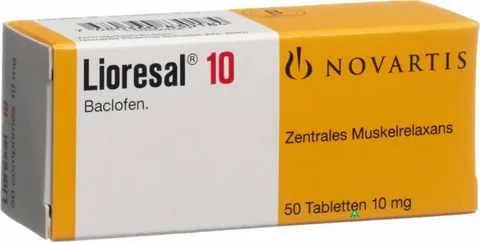Buy caduet


In the realm of cardiovascular wellness, managing multiple conditions often requires a multifaceted approach. One such solution is a medication that addresses both cholesterol levels and hypertension, providing a comprehensive strategy for heart health. This dual-action therapy not only simplifies treatment regimens but also enhances patient adherence and outcomes.
Understanding the dual-action therapy is essential for anyone looking to streamline their heart health management. This innovative approach integrates two powerful ingredients, each targeting a specific aspect of cardiovascular health. By combining these therapies, patients can experience more effective control over their heart conditions with fewer pills, leading to greater convenience and better compliance with prescribed treatments.
Efficiency and convenience are at the heart of this therapy. By merging the effects of two distinct medications into a single dose, patients benefit from a simplified treatment plan. This can lead to improved adherence to prescribed regimens, reducing the likelihood of missed doses and ensuring more consistent management of cardiovascular health.
For those seeking to enhance their cardiovascular wellness, this combined medication offers a promising solution. Its dual-action formula is designed to provide comprehensive support for heart health, addressing both cholesterol and blood pressure concerns in one efficient treatment. This approach not only helps in managing existing conditions but also plays a crucial role in preventing future complications, paving the way for a healthier, more balanced life.
Here’s How It Can Be Done:
When delving into the realm of understanding Caduet, it’s crucial to grasp its multifaceted nature beyond mere purchase considerations. This section embarks on an exploration of Caduet’s utility and advantages, elucidating its varied applications and benefits.
Understanding Caduet: Uses and Benefits
Caduet, a blend of amlodipine and atorvastatin, amalgamates the efficacies of two distinct medications to address hypertension and cholesterol management concurrently. This amalgamation aims to synergize the therapeutic effects, offering a comprehensive approach to cardiovascular health.
| Key Points | Details |
|---|---|
| 1 | Amlodipine component: |
| – Antihypertensive agent | |
| – Dilates blood vessels, reducing blood pressure | |
| 2 | Atorvastatin component: |
| – Cholesterol-lowering medication | |
| – Inhibits cholesterol production in the liver | |
| – Reduces LDL (“bad”) cholesterol levels | |
| 3 | Dual action: |
| – Addresses two major cardiovascular risk factors simultaneously | |
| – Streamlines medication regimen for patients |
Understanding the nuanced roles of amlodipine and atorvastatin within Caduet facilitates a comprehensive comprehension of its therapeutic potential. By exploring its diverse applications and inherent benefits, individuals can make informed decisions regarding its incorporation into their healthcare regimen.
Understanding Caduet: Uses and Benefits
When delving into the realm of cardiovascular health, it becomes imperative to comprehend the utility and advantages of pharmaceutical interventions like Caduet. This amalgamation of amlodipine and atorvastatin serves as a potent tool in managing various facets of cardiovascular health, from controlling blood pressure to regulating cholesterol levels.
Optimizing Cardiovascular Health
Caduet, beyond its mere categorization as a medication, plays a pivotal role in optimizing cardiovascular health. By synergistically addressing hypertension and dyslipidemia, it aids in mitigating the risk factors associated with cardiovascular diseases.
Safely Navigating Online Procurement
Amidst the digital landscape, individuals seeking Caduet often navigate the online sphere for procurement. Understanding the nuances of safely purchasing pharmaceuticals online becomes imperative to ensure authenticity and efficacy.
By comprehending the mechanisms underlying the safe procurement of medications like Caduet, individuals can confidently embark on their journey towards cardiovascular wellness, leveraging the benefits while mitigating potential risks.
How to Buy Caduet Online Safely
Acquiring prescription medications through the internet has become increasingly popular due to its convenience and accessibility. However, it’s essential to approach this method with caution to ensure that you are obtaining genuine and safe products. This section will guide you through the necessary steps and precautions to take when purchasing pharmaceuticals online, helping you make informed and secure decisions.
Research Reputable Online Pharmacies
When considering an online source for your medications, it’s crucial to identify and verify reputable pharmacies. Look for online drugstores that are licensed and regulated by relevant authorities. Here are some tips to help you find a trustworthy provider:
- Check for accreditation by organizations such as the National Association of Boards of Pharmacy (NABP) or similar regulatory bodies in your region.
- Read reviews and ratings from other customers to gauge the pharmacy’s reliability and service quality.
- Ensure the website provides a physical address and contact information.
- Verify that the pharmacy requires a valid prescription from a licensed healthcare provider.
Protect Your Personal and Financial Information
Securing your personal data is of utmost importance when making online transactions. Follow these guidelines to protect your information:
- Only use websites with secure connections, indicated by a URL that starts with “https://” and a padlock icon in the address bar.
- Avoid sharing personal details over email or on unsecured platforms.
- Use credit cards rather than debit cards for better fraud protection.
- Regularly monitor your financial statements for any unauthorized transactions.
By following these steps and exercising caution, you can safely navigate the process of purchasing medications online, ensuring that you receive quality products while safeguarding your personal information.
Comparing Caduet with Other Medications
In this section, we’ll explore how this medication stacks up against other similar treatments. Understanding the differences and similarities can help patients and healthcare providers make informed decisions about the best course of therapy.
Effectiveness and Usage
Different medications are prescribed based on their effectiveness and intended use. Some drugs are more suitable for specific conditions, while others might offer broader applications. Let’s delve into the comparative effectiveness:
- Combination Therapy vs. Single Ingredient: Some medications combine multiple active ingredients to address more than one condition, while others focus on a single ailment. Consider the benefits and drawbacks of each approach.
- Onset of Action: The time it takes for a medication to start working can vary significantly. Faster-acting treatments might be preferred in acute situations, whereas slower-acting options might be suitable for chronic management.
Cost and Accessibility
The financial aspect and availability of medications play a crucial role in treatment choices. Here’s how different drugs compare:
- Price Range: Medications can vary widely in cost. Generic versions often provide a more affordable option without compromising quality.
- Insurance Coverage: Insurance plans may cover some medications fully, partially, or not at all. It’s important to check with your provider to understand your out-of-pocket expenses.
- Availability: Some treatments might be readily available in local pharmacies, while others could require special orders or might only be available through certain suppliers.
Side Effects and Interactions
Every medication comes with potential side effects and interactions. Comparing these can help you weigh the pros and cons:
- Common Side Effects: While most drugs have mild and manageable side effects, some can cause more significant issues. Understanding these can help in choosing a safer option.
- Drug Interactions: It’s essential to consider how different treatments interact with other medications you might be taking. Some combinations can enhance therapeutic effects, while others might lead to adverse reactions.
By considering these factors, patients and healthcare providers can make better-informed decisions about which medication best suits their needs, balancing effectiveness, cost, and safety.
Cost: What to Expect
When considering the financial aspect of acquiring a prescribed medication, it’s important to understand the various factors that can influence the overall price. This section will provide a detailed overview of the expected expenses, helping you to make an informed decision.
Price Variability
The cost of your medication can vary significantly based on several factors, including the location of the pharmacy, whether you choose a generic version, and your insurance coverage. It’s essential to explore different sources and options to find the most cost-effective solution.
Insurance Coverage
Your insurance plan plays a crucial role in determining out-of-pocket expenses. Some plans may cover the medication fully, while others might require a copayment or have a deductible that must be met first. Contact your insurance provider to understand your benefits and any potential savings.
Generic Alternatives
Opting for a generic alternative can significantly reduce costs. Generic versions contain the same active ingredients and are required to meet the same standards of quality and efficacy as brand-name drugs, often at a fraction of the price.
Discount Programs and Coupons
Many pharmaceutical companies and pharmacies offer discount programs or coupons that can lower the cost of medications. It’s worth researching and utilizing these resources to minimize your expenses.
Online Pharmacies
Purchasing from online pharmacies can sometimes offer more competitive pricing. However, it is crucial to ensure that the online source is reputable and that the medication is genuine and safe. Always verify the legitimacy of the pharmacy before making a purchase.
Pharmacy Pricing
Prices can differ from one pharmacy to another, even within the same city. Comparing prices at different pharmacies, including large chains and local stores, can help you find the best deal. Some pharmacies also have price-matching policies that can be beneficial.
By understanding these factors, you can better navigate the financial aspects of obtaining your prescription, ensuring you receive the necessary treatment without unnecessary financial strain.
Potential Side Effects
When considering any medication, it’s crucial to be aware of possible adverse reactions that may occur. Understanding these can help you manage and mitigate risks, ensuring a safer treatment experience. This section provides an overview of common and less frequent reactions, as well as guidance on what to do if you experience any symptoms.
Common Side Effects
Most medications can cause side effects, and this one is no exception. Some people may experience mild reactions, which are generally manageable and often diminish over time as the body adjusts to the treatment. Common reactions can include:
- Headaches
- Dizziness
- Nausea
- Fatigue
- Muscle pain
If these symptoms persist or become bothersome, it is advisable to consult with a healthcare provider for further advice.
Serious Side Effects
While rare, some individuals may experience more severe reactions. It is essential to be vigilant and seek medical attention if you encounter any of the following symptoms:
- Severe abdominal pain
- Persistent muscle weakness or tenderness
- Yellowing of the skin or eyes (jaundice)
- Dark urine
- Allergic reactions such as rash, itching, or swelling, particularly of the face, tongue, or throat
These symptoms may indicate serious conditions that require prompt medical intervention.
Managing Side Effects
There are several strategies to manage and potentially reduce adverse reactions:
- Discussing with your doctor before starting the medication to understand all potential risks.
- Following the prescribed dosage and administration instructions carefully.
- Maintaining regular check-ups to monitor your health and the medication’s effects.
- Reporting any unusual symptoms to your healthcare provider immediately.
- Staying informed about potential drug interactions and lifestyle factors that may exacerbate side effects.
Being proactive and communicative with your healthcare provider can significantly enhance your treatment experience and ensure any complications are swiftly addressed.
In this section, we will delve into the financial considerations associated with acquiring prescribed medications. Understanding the cost dynamics and the various factors influencing prices can help individuals make informed decisions and manage their healthcare expenses more effectively.
Factors Influencing Medication Costs
The price of medications can vary widely based on several factors. These include the type of medication, the manufacturer, the location of purchase, and whether a generic version is available. Understanding these elements can help you anticipate the potential costs and explore options to minimize expenses.
Comparing Prices
To make an informed decision, it’s essential to compare prices from different sources. Prices can vary between local pharmacies, online retailers, and mail-order services. Additionally, insurance coverage and discount programs can significantly affect the final cost. The table below provides a comparative overview to help you understand the potential price range:
| Source | Price Range | Notes |
|---|---|---|
| Local Pharmacy | $X – $Y | Convenient but may be higher in price |
| Online Retailer | $A – $B | Often lower prices, check for credibility |
| Mail-Order Service | $C – $D | Potentially cost-effective for long-term use |
It is also advisable to consult with your healthcare provider or a pharmacist about cost-saving options. They might offer insights into generic alternatives or therapeutic equivalents that can provide the same benefits at a lower cost.
Utilizing Insurance and Discount Programs
Insurance plans and discount programs play a crucial role in managing medication expenses. It’s important to review your insurance policy to understand the coverage details and out-of-pocket costs. Many insurance plans have formularies that list preferred medications at lower co-pays.
In addition, numerous discount programs and coupons are available, which can significantly reduce the cost. These programs are often provided by pharmaceutical companies, healthcare providers, or third-party organizations. Signing up for these programs can lead to substantial savings.
In conclusion, being proactive about understanding and managing the cost of medications involves exploring various purchasing options, comparing prices, and leveraging insurance and discount programs. By doing so, you can ensure that you are getting the best possible value for your healthcare expenditures.



